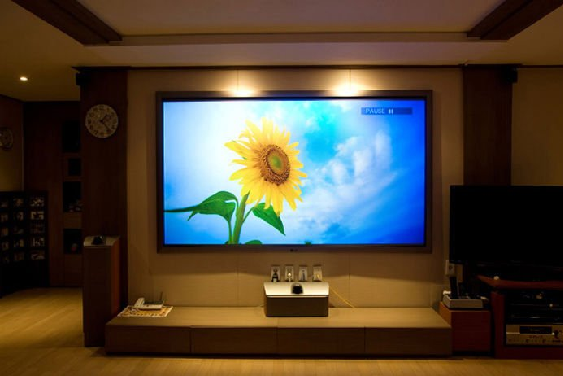Business meetings are usually inconplete with presentations projected on a screen. Many homeowners also seek a theatrical experience in their comes by using a projector screen. In both circumstances, you need to find an elite provider of a wide range of projector screens. It represents a rich market segment with numerous screen types available. The usual materials used for setting projector screens include PVC, acrylic, fiberglass, glass, and special optic.
How rear projection works
A rear projector screen is one where the projecting apparatus is behind the screen instead of being at the front. This arrangement creates a strong projection even if there may be ambient light that you cannot dim out fully. You need to check into certain aspects to select a good screen. You do not have to purchase space consuming screen settings also. Advanced self-adhesive screen materials can be pasted over a transparent glass panel, and you can start your presentation.

Different aspects of buying or renting
Check the screen material gain values. A screen with high gain can display the projection despite the visual obstacle of ambient light. It is always the best to buy screens with acoustic penetration. These enable you to set up audiovisual presentations as well. Think about the purpose of buying the screen. If you are solely using it for business purposes where slides appear and you dictate each of them verbally, then the acoustic penetration is unnecessary.
Homeowners purchasing the optical projector screen for a theater -like experience obviously need the acoustic aspect. Buying an appropriate acoustic transparent screen also depends on the resolution of the projector. Usually, all such screens support a 1080p projector. The screen ratio and the diagonal size are the other aspects you must consider. The screen size can range anywhere in the diagonal range of 15 to 300 inches. It all depends on the experience you intend to deliver.
How rear projection works
A rear projector screen is one where the projecting apparatus is behind the screen instead of being at the front. This arrangement creates a strong projection even if there may be ambient light that you cannot dim out fully. You need to check into certain aspects to select a good screen. You do not have to purchase space consuming screen settings also. Advanced self-adhesive screen materials can be pasted over a transparent glass panel, and you can start your presentation.

Different aspects of buying or renting
Check the screen material gain values. A screen with high gain can display the projection despite the visual obstacle of ambient light. It is always the best to buy screens with acoustic penetration. These enable you to set up audiovisual presentations as well. Think about the purpose of buying the screen. If you are solely using it for business purposes where slides appear and you dictate each of them verbally, then the acoustic penetration is unnecessary.
Homeowners purchasing the optical projector screen for a theater -like experience obviously need the acoustic aspect. Buying an appropriate acoustic transparent screen also depends on the resolution of the projector. Usually, all such screens support a 1080p projector. The screen ratio and the diagonal size are the other aspects you must consider. The screen size can range anywhere in the diagonal range of 15 to 300 inches. It all depends on the experience you intend to deliver.

No comments:
Post a Comment